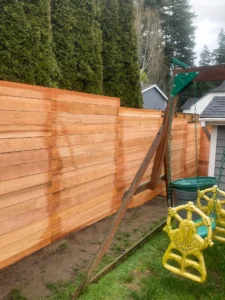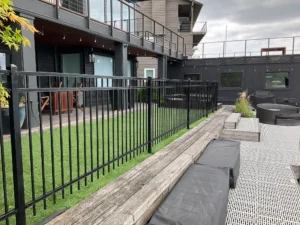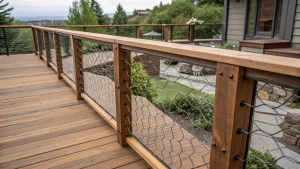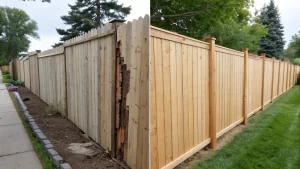Learn exact hog wire fence installation costs, from materials to labor expenses, plus how Inline Fence's professional installation services can maximize your investment while saving on seasonal pricing 💸
Understanding the true hog wire fence cost before starting your project can save you from surprises down the road. According to HomeGuide, most homeowners in Seattle and King County spend between $6.50 and $15.50 per linear foot for professional hog wire fence installation. The exact cost of hog wire fence projects depends on several factors — the materials you choose, labor conditions, terrain conditions, and even the season when you schedule the build.
In this guide, we’ll break down pricing fundamentals, provide a clear materials vs. labor cost split, and highlight how seasonal discounts can reduce your bill by up to 20%. You’ll also find a master table of Seattle-area hog wire fence prices and a look at how a hog wire fence cost calculator can help you estimate your project. Whether you’re planning a simple garden border, a new fence for property boundaries, or a framed fence for your yard, these numbers will help you budget with confidence.
For a clear estimate tailored to your yard, Inline Fence installs hog wire fences throughout Seattle and offers free estimates to help you budget with confidence.
Disclaimer: Prices and cost estimates in this guide are for informational purposes only and reflect 2025 averages for Seattle and King County. Actual hog wire fence costs may vary based on property size, fence size, fence height, terrain, material choices, labor rates, and seasonal market conditions. Always request a personalized quote from a licensed fencing contractor like Inline Fence before making purchasing or installation decisions.
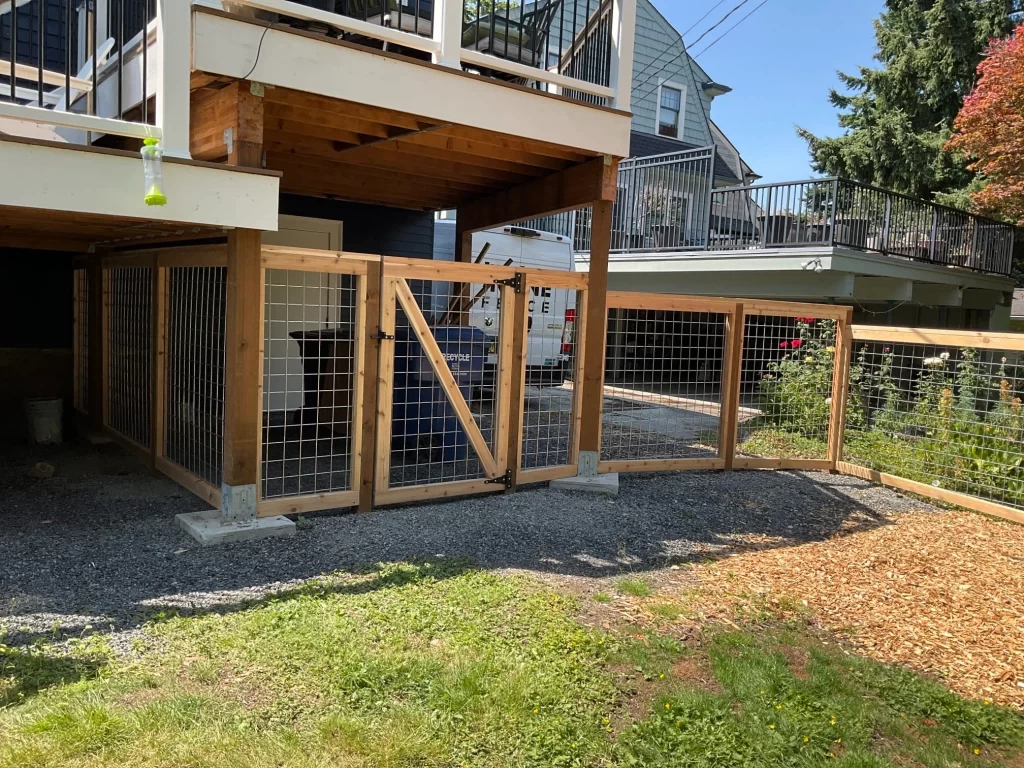
Understanding hog wire fence pricing fundamentals
If you’re considering hog wire fencing for your property, the first step is knowing where the numbers usually fall. According to national data from Angi, the average cost of hog wire fence installation across the U.S. ranges from $3 to $12 per linear foot, with Seattle-area projects typically higher due to regional price adjustments and demand. Materials and labor in the Pacific Northwest typically run 15–30% more expensive than national averages because of higher demand, cost of living, and local permitting requirements.
Breaking it down further, hog wire fences generally split costs about evenly: 50% materials and 50% labor. Panels, posts, and framing hardware make up the material side, while digging, framing, and securing panels drive the labor. If you choose a framed design with cedar or steel wire borders, expect the cost to be two to three times higher than frameless versions.
For those planning a Seattle project, hog wire fence prices are shaped by:
- Fence length & terrain conditions – Sloped yards require more posts and labor.
- Framing materials – Cedar or heavier gauge wire framing adds style but increases cost.
- Seasonal demand – Prices dip in late fall and winter when contractors are less busy.
- Customization – Gates, staining, or powder-coated panels add to the bottom line.
Using a hog wire fence cost calculator is a smart way to get an initial estimate, but remember: local market conditions in King County can nudge your project cost higher than the national figures you’ll see online.
Master Cost Table: Hog Wire Fence Pricing in Seattle (2025)
Category | National Average (per foot) | Seattle Average (per foot) | Notes & Variations |
Basic frameless hog wire fence | $3 – $7 | $6.50 – $10.50 | Cheapest option, minimal framing |
Framed hog wire with cedar/steel | $8 – $12 | $12 – $15.50 | Framed designs 2–3x higher than frameless |
Materials (panels, posts, hardware) | 50% of total cost | 50% of total cost | Price varies with panel quality |
Labor costs | $1.50 – $5 | $3 – $6.50 | Higher in Seattle due to wages and permitting |
Seasonal pricing | 0–5% off in slow months | 10–20% off in fall/winter | Discounts available when demand drops |
Alternative options | Chain link: $8 – $12 | Chain link: $10 – $15 | Vinyl, cedar, ornamental iron often higher |
Total installed cost | $3 – $12 | $6.50 – $15.50 | Typical Seattle homeowner range |
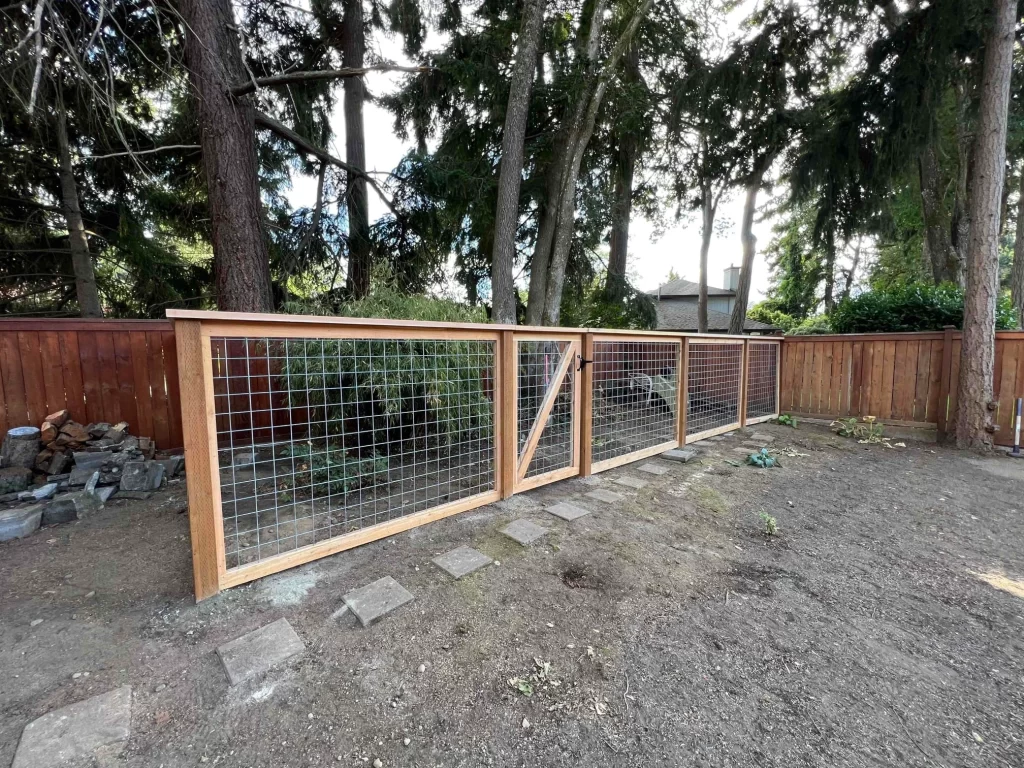
Complete materials cost breakdown for hog wire fencing
When planning a hog wire fence in Seattle, understanding how much is hog wire fencing for your project is key. The primary components include hog wire panels, posts, framing, gates, and fastening hardware.
Different types of fencing influence costs: a standard hog panel fence is usually more affordable than a fully framed or decorative version, while box wire fence cost is slightly lower for agricultural or large-scale farm fencing or acre hog wire fencing applications. Combining all materials, most homeowners in King County spend roughly 50% of their total fence budget on materials, with higher-end residential options increasing the share slightly.
FAQs homeowners often ask:
- Can I use untreated steel? Yes, but galvanized or powder-coated panels last longer in Seattle’s wet climate and help prevent rot.
- Do I need special posts for corners? Heavier gauge steel or framed wooden posts provide stability for angles and gates.
- How many panels per 100 feet? Typically, 8–12 panels, depending on panel width and gate placement.
Understanding material costs hog wire fence and the pricing of each component ensures your project budget stays realistic and helps you make informed choices about upgrades, gate placement, and fencing style.
Wire panels and fencing components pricing
A closer look at hog wire fence panels and other fencing components helps Seattle homeowners plan their budgets more precisely. Hog wire panels typically come in 4×8 or 4×10-foot sections, with prices ranging from $25 to $60 per panel, depending on wire gauge and coating. Residential upgrades, like residential hog wire fence panels with powder-coated finishes or custom dimensions, can reach $70 – $90 per panel.
Other key components include posts and hardware. Standard wooden posts usually cost $15 – $40 each, while steel posts range $20 – $50 each, providing enhanced durability and longevity. Brackets, fasteners, and gate kits typically add $3 – $5 per linear foot, which is essential to factor into your overall hog wire fence cost.
If you purchase panels in large rolls for larger projects or permanent installations, you might find bulk pricing that reduces per-foot expenses. Frameless designs are cheaper, requiring fewer posts and less hardware, whereas framed options — especially with decorative cedar or steel borders — can multiply material costs by 2–3 times. Gates are another variable; a basic 3–4 foot residential gate may cost $100 – $200, while double gates or custom designs can exceed $500.
👉 Schedule a free Seattle-area consultation with Inline Fence today to discuss your yard's layout, panel options, and the materials that best fit your design and budget.
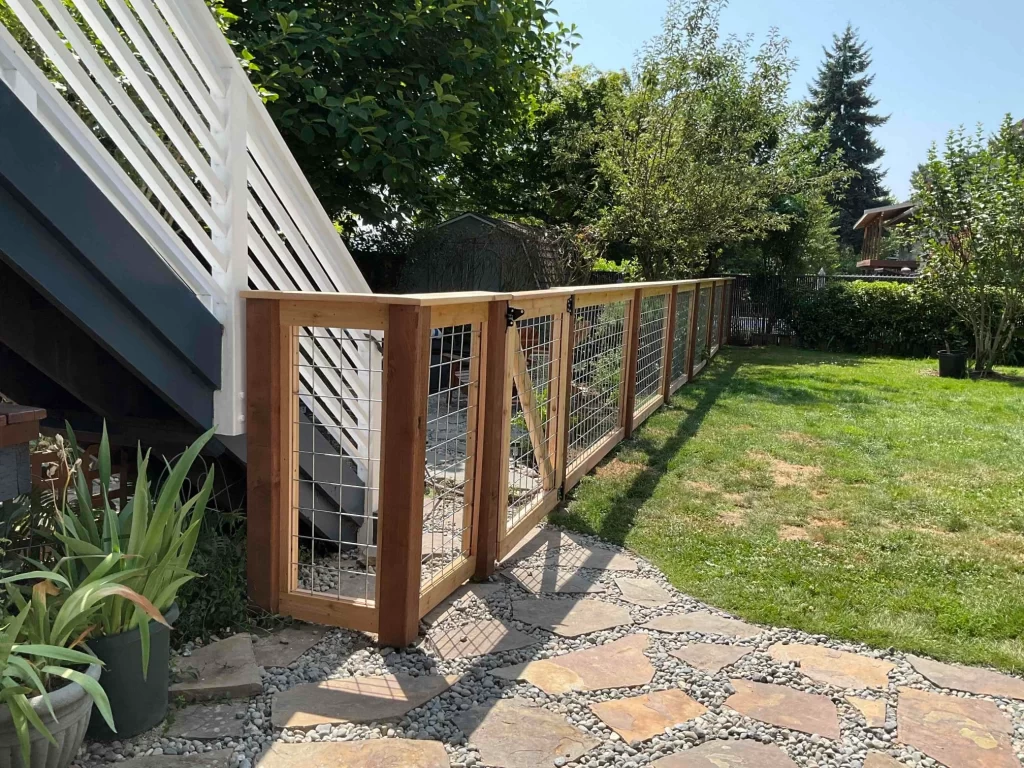
Professional installation costs and labor expenses
Once you’ve budgeted for materials, the next major factor in Seattle is labor. Hog wire fence installation cost can vary significantly depending on yard size, clay soil, and complexity of the design. On average, homeowners in King County pay $6.50 to $15.50 per linear foot for a fully installed hog wire fence, which aligns with the higher end of national averages due to local labor rates and permitting fees.
Labor costs for hog wire fence typically accounts for roughly 50% of the total project cost. This includes digging post holes, setting posts in concrete, securing panels, and installing gates. In sloped or uneven yards, additional labor is required to ensure stability and proper alignment, which can increase the per-foot cost. Seasonal factors also influence pricing — seasonal fence installation costs are generally lower in late fall and winter when demand drops, offering homeowners an affordable option for savings.
Other labor considerations include prep work such as clearing vegetation, adjusting existing landscaping, gathering the necessary tools, and ensuring compliance with local building codes. For homeowners who want the peace of mind of a durable, code-compliant fence, hiring a professional often outweighs the cost savings of a DIY approach.
DIY vs professional installation considerations
When planning a hog wire fence, many homeowners weigh the pros and cons of DIY versus hiring professionals. A detailed hog wire fence cost breakdown helps clarify where savings and trade-offs occur. Doing it yourself can reduce labor costs significantly, but it also requires time, more materials, tools, and experience to ensure posts are secure and panels are properly aligned. Mistakes can lead to uneven fencing, sagging panels, or additional repair costs down the line.
For comparison, a cattle panel fence cost — common on farms — is often lower for DIY installations because the panels are lighter and easier to work with. However, residential projects in Seattle typically involve heavier, framed panels, gates, and compliance with local building codes, making professional installation a safer choice for long-term durability.
DIY installations are best suited for small garden fences or temporary barriers, while larger properties or framed residential fences benefit from the efficiency and expertise of licensed industry experts.
⭐⭐⭐⭐⭐
“Great service and quality. They came for an estimate at the time that was promised. High quality fence at reasonable price and great customer service. One of the posts loosened after installation due to a broken underground water line, and they came out the same day to repair.”– Mark H.
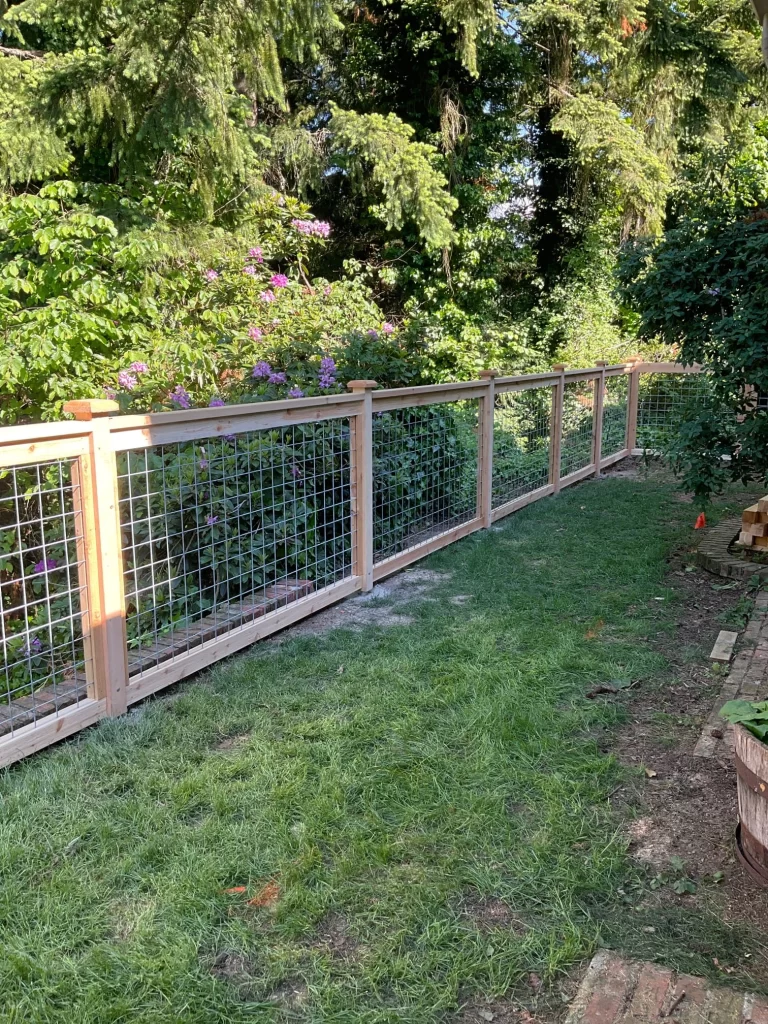
Seasonal pricing variations and timing strategies
Timing your fence project can make a noticeable difference in cost. In Seattle, seasonal fence installation costs tend to drop 10–20% during late fall and winter, when demand for contractors slows down. Scheduling your project during off-peak months can help you save on both labor and sometimes materials, especially if your yard requires extensive prep work.
Even smaller installations, like a hog panel garden fence, can benefit from careful timing. Cooler, drier months reduce scheduling conflicts and allow contractors to work more efficiently, which often translates to a smoother installation process and lower overall costs. Planning ahead and aligning your project with the slow season is a smart strategy for homeowners looking to maximize value.
Cost calculator tools and estimation methods
Estimating your hog wire fence cost per foot before committing to a project can save both time and money. One of the easiest ways to do this is by using a hog wire fence cost calculator, which allows you to input your fence length, panel type, gate requirements, and desired framing options. The calculator then provides an approximate total cost, helping you budget realistically.
These tools also let you compare different materials, panel gauges, and post types. For example, a frameless panel layout may produce a lower cost per foot, while adding a powder-coated or cedar frame will increase the estimate. Many online calculators factor in labor averages, but keep in mind that Seattle’s labor rates are higher than the national average, so the calculator should be used as a guideline rather than a final quote.
For homeowners who prefer a hands-on approach, manually calculating costs is also possible. Multiply the number of panels needed by their per-unit cost, add post and hardware expenses, and include an estimated labor fee based on local rates. Using either method, a cost calculator or manual estimate provides a clear view of your potential investment before contacting a professional installer for a tailored consultation.
Get your personalized hog wire fence estimate 👉 contact Inline Fence now to check your calculations, explore framing and gate options.
Alternative fencing options and cost comparisons
While hog panel fences are popular for their durability and visibility, it’s worth comparing other options to ensure you select the right fit for your Seattle property. For example, box wire fence cost is slightly lower, making it a practical choice for agricultural or large perimeter projects. However, box wire may not offer the same sleek appearance or residential appeal as hog wire panels.
Other alternatives include vinyl, cedar, chain link, and ornamental iron fences. Vinyl fences are low-maintenance and provide privacy, but typically cost $25 – $40 per linear foot installed, higher than basic frameless hog wire. Cedar fences offer a classic look and natural resistance to decay, averaging $20 – $35 per foot, but require regular staining to maintain their lifespan. Chain link is affordable and functional, at roughly $10 – $20 per foot, but may lack the aesthetic appeal homeowners want for a backyard or garden. Ornamental iron delivers durability and style, often exceeding $30 – $50 per foot, making it a premium choice for visual impact.
DIY-friendly options, like cattle panel fence cost, are usually lower, but they don’t always meet the design or longevity needs of residential properties. Hog wire fencing strikes a balance between cost, aesthetics, and durability, particularly when installed by a professional.
Ready to Get Started on Your Hog Wire Fence?
For homeowners in Seattle and King County, professional installation can make all the difference in durability and appearance. Inline Fence installs hog wire fences across the region, offering expert guidance, precise installation, and a free consultation to help you determine the best fencing solution for your property.


